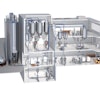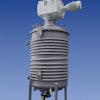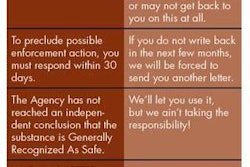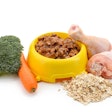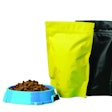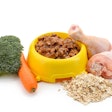The Association of American Feed Control Officials (AAFCO) held its annual meeting August 13-15 in St. Pete Beach, Florida, USA. This was the first meeting of the organization I have missed in 24 years (that's over 50 meetings, counting all the annual and mid-year meetings as well as the stand-alone Pet Food Committee meetings that were held in the 1990s)! While I was unable to attend this time, my contacts who did go to the meeting reported some interesting activities.
Perhaps the biggest announcement at the meeting was the introduction of an online version of the AAFCO Official Publication. Subscribers will be able to use their computers, tablets and other devices to search the "Model Bill and Regulations," "Ingredient Definitions" and other sections of the publication using key words. My assessment of the pros and cons of this new offering will appear in a future column.
In other news, the AAFCO membership voted down a motion to forego a recommended grace period for enforcement of the new calorie content requirements for dog and cat food labels as they are to be published in the 2014 AAFCO Official Publication. By default, then, the original proposal of the Pet Food Committee stands; i.e., AAFCO will recommend delay of enforcement of the new rules by states for 18 months for new products and for three years for existing products after publication. However, based on comments I received it appears unlikely that AAFCO will be inclined to make these sorts of recommendations for new regulations in the future. The prevailing mindset is that AAFCO should not be advising states on how and when to enforce regulations they may choose to adopt.
The membership did approve a policy statement directed at the distribution of live animals and plants sold as food. Under the policy, items like rodents, insects and fish, often sold live for feeding of reptiles or other animals, would be exempt from registration and labeling requirements as commercial feed provided the labeling and advertising do not bear claims regarding nutritive content. This would be similar to the existing policy regarding rawhides and other chews. I presume these items would still fall under the legal definition of "food," however, so the Food and Drug Administration (FDA) and states would still have powers to act against an item that was found to be adulterated or misbranded.
Although the revisions to the AAFCO Dog and Cat Food Nutrient Profiles were approved by the Pet Food Committee last January, there was an oversight in the document that had been sent forward with regard to maximum calcium content of complete and balanced dog foods. As it is now resolved by the Pet Food Committee, the maximum calcium will remain at 2.5% for adult maintenance foods only, but those products intended for all life stages will be limited to 1.8% calcium.
This need for additional action means that the updated nutrient profiles will not appear in the 2014 Official Publication as previously anticipated, though presumably they would be published in 2015. There was no discussion regarding a grace period for enforcement of these new values, so it would be prudent for petfood companies to begin assessing their products with respect to compliance with the new profiles now.
The amendment to the "95% rule," which would broaden the range of ingredients allowed to be part of a product name without need for further qualification, was approved by the Model Bills & Regulations Committee without debate. A vote by the general membership is expected in January. If the amendment passes, a product containing at least 95% chicken and rice in combination could be labeled simply as "Chicken & Rice," whereas currently the rule would require at least 95% of the chicken alone in order to bear that name or further qualification of the name with terms such as "Formula" or "Recipe."
Another issue raised but not resolved during the Pet Food Committee meeting concerns guarantees for specialty petfoods. Although the AAFCO Model Regulations for Pet Food and Specialty Pet Food as amended several years ago expressly require specialty petfood labels to bear guarantees in the same units and format used for AAFCO Cat Food Nutrient Profiles, a few states are demanding compliance with the livestock feed labeling rules as were required before the amendment. This has caused a significant problem for specialty petfood manufacturers who in good faith made changes to their labels to comply with the new AAFCO rules but are now facing conflicting state requirements. Hopefully a remedy can be negotiated.
Other items at the meeting included an announcement by FDA that finalization of its draft Compliance Policy Guide relating to therapeutic petfoods (see sidebar) has been put on hold while it addresses items it deems of higher priority to the agency. The proposed policy only puts in writing what FDA has been exercising for decades, anyway. Work continues on a means to allow for carbohydrate-related information on dog and cat food labels.
Progress is also being made on updating the AAFCO Pet Food and Specialty Pet Food Labeling Guide and Label Review Checklist. Finally, there was talk of AAFCO developing a website for petfoods directed specifically to the consumer.

